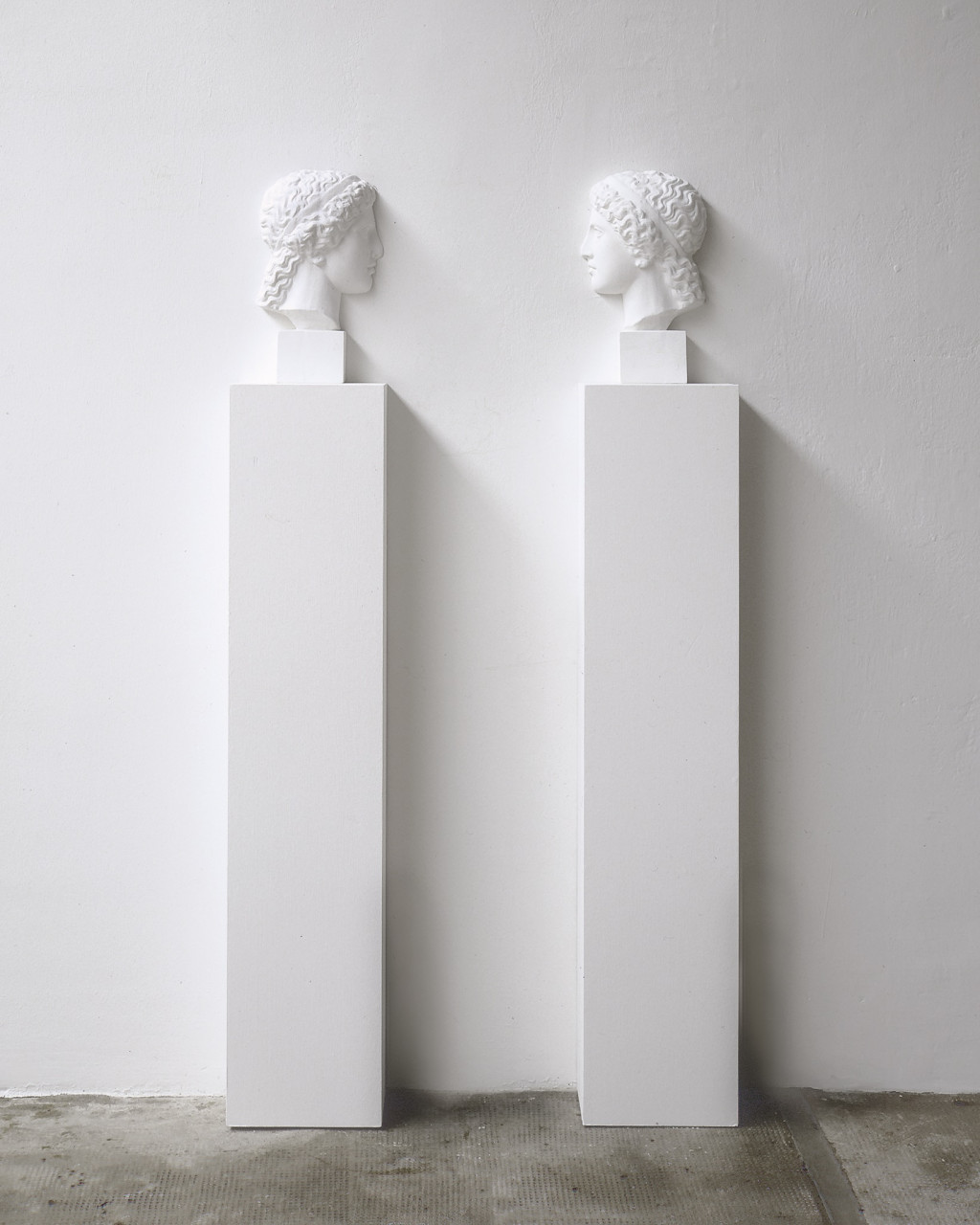



Vis-à-vis (Hera), 1992
From Wall Works
Two halves of a plaster bust on white painted wooden pedestals, to be installed facing each other, spaced 35 cm apart, against a white painted wall. Installation size 169 x 90 x 15 cm (66½ x 35½ x 6 in). Limited to an edition of 10, with a signed and numbered certificate drawing.
Giulio Paolini’s wall work edition Vis-à-vis (Hera) stages a silent encounter between two mirrored halves of a classical plaster cast. The bisected head of Hera – the Greek goddess of marriage, women, and family – is mounted on twin white pedestals positioned directly opposite one another against the wall. In this confrontation, the two identical profiles seem to gaze eternally at one another, enacting a visual dialogue that is at once intimate and abstract. The work continues a line of inquiry Paolini initiated in 1975 with Mimesi, where the mirrored gaze of two classical heads first raised questions about the ontology of the artwork itself. Here, as then, Paolini explores the act of seeing and being seen, turning vision into both subject and medium. The duplication and symmetry suspend the sculpture in a state of timeless reflection, prompting viewers to consider not only the nature of artistic representation but also the moment of encounter – between image and viewer, between subject and object, and between identical selves. Vis-à-vis (Hera) becomes a meditation on identity, repetition, and the fundamental structures through which art manifests itself.